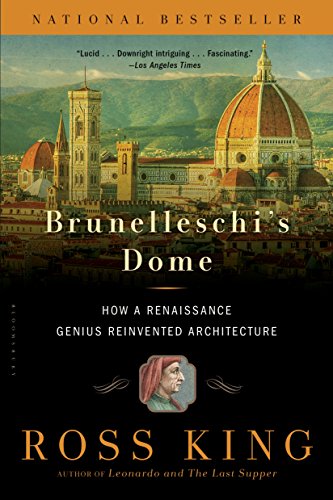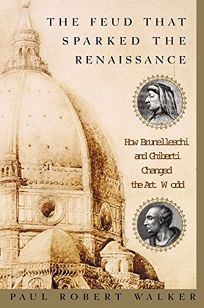|
Brunelleschi's Dome: How a Renaissance Genius Reinvented Architecture
By Ross King Published in August 2013 208 Pages Thibault’s Score: 3/5 Ross King’s account of Brunelleschi is a no-bullshit account of how Filippo Brunelleschi built the dome of the Florence Cathedral. The dome was the largest of its day, having beaten the 800 year old record of Hagia Sofia in Constantinople. It would only be surpassed in the late 19th century. I recently read another book about the construction of the cathedral - The Feud That Sparked the Renaissance. The Feud That Sparked the Renaissance focused on human drama and the disputes between the various parties involved in the creation of the cathedral. This book instead focused on the technical achievements of the construction, giving clearer accounts of the construction. If I had to recommend a single book about the history of the Florence cathedral, I would definitely recommend this one. It is worth reading if you are interested in the history of architecture, the renaissance, and art. I would not recommend it to a lay audience, because it can be a little bit dry at times.
0 Comments
The Feud That Sparked the Renaissance
By Paul Robert Walker Published in October 2009 308 Pages Thibault’s Score: 3/5 The Feud that Sparked the Renaissance covers the lives of two early Renaissance artists - Filippo Brunelleschi and Lorenzo Ghiberti. Both architects were commissioned to work on Florence’s largest cathedral - Cattedrale di Santa Maria del Fiore. Several contests were held to determine who would work on what. The artists applied to the various contests. Ghiberti won the contest to build the doors, and Brunelleschi won the contest to build the dome. Problems arose because the two men could not stand working with each other. Their personalities clashed. Lorenzo Ghiberti tended to prefer more medieval “Gothic” art while Filippo Brunelleschi tended to prefer a return to older Roman styles. Because the cathedral project took decades, they spent their entire lives fighting over the completion of the project. Reading the book can be quite frustrating. I find a lot of the human drama boring and tedious. It reminded me of my own professional struggles. The book had many good tidbits about daily life and technology - how a cafeteria was built on the dome for the workers, how the raw materials were ferried on the river, and how a prank was played on a woodworker which shed insight into perspective. Overall, the book has memorable tidbits. I only recommend it to die hard art history fans. |
Thibault SerletMost of my articles are book reviews, but I also write about many other topics. Archives
December 2023
Categories |


 RSS Feed
RSS Feed